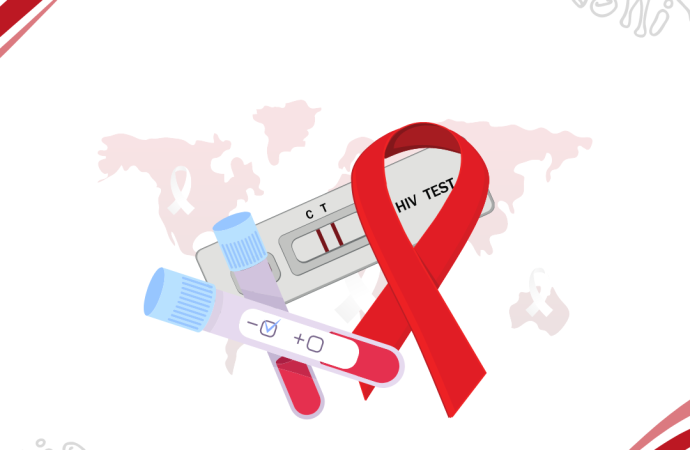Introduction: Welcome to a comprehensive guide on crucial knowledge surrounding HIV/AIDS – a global health concern that demands our understanding, attention, and action. In this exploration, we will unravel the cause of HIV/AIDS, delve into the science behind the virus, and illuminate effective prevention strategies. Whether you’re seeking to expand your awareness or aiming to
Introduction:
Welcome to a comprehensive guide on crucial knowledge surrounding HIV/AIDS – a global health concern that demands our understanding, attention, and action. In this exploration, we will unravel the cause of HIV/AIDS, delve into the science behind the virus, and illuminate effective prevention strategies. Whether you’re seeking to expand your awareness or aiming to contribute to the fight against HIV/AIDS, join us on this informative journey.
1. Understanding HIV/AIDS: The Basics
To combat HIV/AIDS, it’s paramount to grasp the fundamentals. This section provides an overview of the virus, its modes of transmission, and the progression from HIV to AIDS. Clearing misconceptions and fostering a foundational understanding is key to effective prevention and support.

Image by: https://www.reddit.com/r/CouplesFirstAid/comments/zycpar/8_quiet_sex_positions_to_try_when_youre_being/?rdt=58331
2. The Science of HIV: Unraveling the Virus
Dive into the intricate world of the human immunodeficiency virus (HIV). Understand how HIV attacks the immune system, the life cycle of the virus, and the key stages of infection. By unraveling the science behind HIV, we gain insights into its complexities and vulnerabilities, laying the groundwork for informed discussions on prevention.
3. Transmission Routes: How HIV Spreads
Knowledge about the modes of HIV transmission is crucial for prevention. Explore the various routes through which the virus can be transmitted, from unprotected sexual intercourse to sharing needles. By understanding how HIV spreads, individuals can adopt preventive measures and contribute to breaking the chain of transmission.
Informative Table: Common Transmission Routes of HIV
| Transmission Route | Risk Level |
|---|---|
| Unprotected Sex | High |
| Sharing Needles | High |
| Mother to Child (During Birth or Breastfeeding) | Medium-High |
| Blood Transfusions (Rare in Developed Countries) | Low |
| Occupational Exposure (Healthcare Settings) | Low |
4. Prevention Strategies: Empowering Communities
Effective prevention goes beyond individual actions – it involves empowering communities with knowledge and resources. Explore a range of prevention strategies, from practicing safe sex to promoting awareness and advocating for access to healthcare. By fostering a culture of prevention, we can work collectively to reduce the incidence of new HIV infections.
Comparative Table: HIV Prevention Strategies
| Strategy | Effectiveness | Key Actions |
|---|---|---|
| Condom Use | High | Consistent and correct usage |
| PrEP (Pre-Exposure Prophylaxis) | High | Daily medication for at-risk individuals |
| Education and Awareness Programs | Medium-High | Community outreach, information dissemination |
| Needle Exchange Programs | High | Providing sterile needles to reduce transmission risk |
| Early and Regular Testing | High | Encouraging routine HIV testing for early detection |
5. Myths and Realities: Dispelling Misinformation
The fight against HIV/AIDS is often hindered by myths and misinformation. Addressing common misconceptions is essential for fostering a supportive and understanding environment. This section will debunk prevalent myths surrounding HIV/AIDS, promoting accurate knowledge and dispelling stigma.
6. Global Impact: Statistics and Initiatives
Gain insight into the global impact of HIV/AIDS through current statistics and initiatives. Understand the prevalence of HIV/AIDS in different regions, ongoing efforts to combat the epidemic, and the importance of international collaboration in achieving the goal of an AIDS-free world.
Conclusion: Empowering Change Through Knowledge
As we conclude our exploration of crucial knowledge surrounding HIV/AIDS, it becomes evident that awareness and understanding are potent tools in the fight against this global health crisis. By unraveling the cause, delving into the science, and exploring prevention strategies, individuals and communities can actively contribute to breaking the cycle of transmission.
Empowerment comes through knowledge, and in the case of HIV/AIDS, knowledge is the cornerstone of prevention, support, and compassion. Let us stand united in our commitment to disseminate accurate information, challenge stigma, and work towards a world where HIV/AIDS is not only understood but eradicated. Together, we can transform crucial knowledge into impactful action, fostering a future where HIV/AIDS is a chapter of the past.

















Leave a Comment
Your email address will not be published. Required fields are marked with *